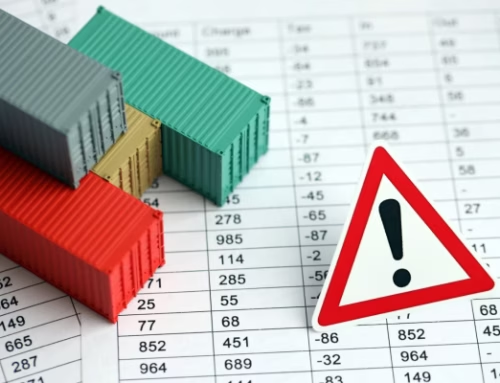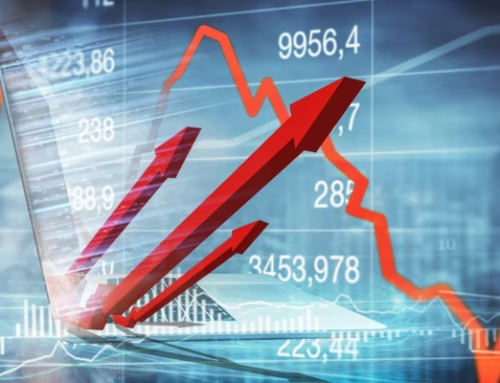Let’s talk about valuations. Forward price-to-earnings (P/E) sits at 22.4. Median P/E (my favorite indicator, which looks at actual trailing 12-month earnings) sits at 24.6. For comparison purposes, the 52-year average, call it “Fair Value,” is 17.3. That suggests the S&P 500 Index’s fair value is 2,134.06. More than 30% below today’s level of 3,202. And it’s not just price relative to earnings. It’s price-to-sales, price-to-operating earnings, price-to-book. Price-to-everything is expensive. Here’s a look (red is bad):

45% have suspended or revised guidance. Analysts expect profits to fall by 20% this year. The futures market is pricing in large cuts to S&P 500 dividends in 2020 and 2021.
With current valuations this high the Ned Davis Research models predict the following:
- 3 Year Real annualized returns – Probable coming annualized returns between 9% and -5% with a 3.5% median.
- 5-Year Real Annualized Price Returns – Probable coming annualized returns between 7% and -2.5% with a 1% median.
- 10-Year Real Annualized Price Returns – Probable coming annualized returns between 5% and -1% with a 3.5% median.
Periods of low returns follow periods of excessive market valuations and encompass the majority of negative return years. Valuations by their very nature are HORRIBLE predictors of 12-month returns. Investors avoid any investment strategy which has such a focus. In the longer term, however, valuations are strong predictors of expected returns.
When discussing valuations, it is important to maintain a proper perspective. Valuations are NOT a market timing device to tell you to buy or sell stocks. What valuations do provide is a framework for understanding forward returns over long periods of time.
Through the end of the Q1-2020, the stock market has returned almost 127.79% from the 2007 peak using quarterly data. This is more than 3x the growth in GDP and 6.5x the increase in corporate revenue. (I have used SALES growth in the chart below as it is what happens at the top line of income statements and is not AS subject to manipulation.

Warren Buffett’s favorite indicator is the total size of the stock market or “Stock Market Capitalization as a Percentage of Nominal GDP.”


Expected Default Rate
At the height of the Great Financial Crisis, the global default rate for junk bonds was 10%. The high-yield market declined by more than 40%. Recall the bad sub-prime mortgage debt, the real estate market crash, Bear Stearns, and Lehman Brothers. That was the last recession. Moody’s predicts the default rate could rise to 20.8% (see the right side of the next chart) in the current recession.

Now, focus in on the left-hand side. One of the problems we face is that much of the distressed debt is in two of the hardest hit sectors: oil & gas and retail & restaurants.
The Federal Reserve Bank, the S&P, and Gold
The Fed has expanded its balance sheet more in three months—by over 70% to $7 trillion-plus—than it did in the six years from December 2007 to November 2013. And there is indeed, as we have verified, a 90% correlation between the Fed’s balance sheet and the S&P 500. But how does one tell investors to hold their nose and buy equities? To ignore fundamentals? To throw intrinsic value out the window and caution to the wind? This is no country for old fundamentalists, that much seems certain.
As I look at the past twelve months as opposed to the past three, both gold and the long bond have generated positive returns of 30%, more than doubling the S&P 500 over that frame and with a fraction of the volatility and drawdown risk.
US Employment
In some regions/industries, it is more lucrative to keep the expanded unemployment benefits than to return to work.


When will consumers feel comfortable resuming the following activities?

Many small businesses are not paying the full rent.

Below is a forecast for the GDP trajectory from Yardeni Research. It may be a while before we see the 2019 highs again.

There seems to be some divergence in confidence between older and younger Americans.

US cities face massive revenue shortfalls.


Latest Unemployment Report from ADP

Morgan Stanley expects the May unemployment rate to hit 17%.

Without additional government support, Americans face two income “cliffs” this summer. The $1,200 stimulus checks will soon run out, and the beefed-up unemployment benefits (extra $600 per month) will expire at the end of July.
COVID deaths at long-term care facilities:

How will the stock market and earnings converge this time?

Friday Jobs Report
On Friday, the Bureau of Labor Statistics released the widely expected employment report for May. Despite continued weekly jobless claims over the last month exceeding more than 8-million, the BLS reported an increase of more than 2.5 million jobs in May. The unemployment rate came in at just 13.3% well below the consensus estimates of 17-19%.
Both of these numbers were historical records surpassing any period back to the “Great Depression.”
Let’s start by taking a look at the raw numbers from the BLS.
From May 2019 to May 2020:
- The civilian population grew by just 1.186 million. (This is a historically slow growth rate for the population which speaks to the demographic problem.)
- The labor force shrank by 4.555 million.(We assume these people no longer want to work.)
- The number of employed individuals fell by 19.602 million.
- The number of unemployed persons rose by 15,047 million.
Again, these are numbers never before seen in history.
What does all this mean for the Fed now? Does an economy that is rebounding on its own still need so much help?
As people dig deeper in the entrails of the most bizarre – and most politicized – jobs report in history, they keep finding more and more irregularities. Consider this:
From the BLS:
“There were also a large number of workers who were classified as employed but absent from work. As was the case in March and April, household survey interviewers were instructed to classify employed persons absent from work due to coronavirus-related business closures as unemployed on temporary layoff.
However, not all such workers were so classified.
If the workers who were recorded as employed but absent from work…had been classified as unemployed on temporary layoff, the overall unemployment rate would have been about 3 percentage points higher than reported (on a not seasonally adjusted basis).
In other words, the unemployment rate was 16.3% even using their own data, which suggests the number of unemployed is closer to 26 million.
What is crucially important to the economy is full-time employment, which is what creates enough income to expand economic growth. The number of full-time employees in the working-age population is at 44.81% which is not high enough to support economic growth.
Since the beginning of the last economic expansion, the working-age population has grown by 25.3 million while employment has fallen by 1.14 million through May. As the BLS confirms above, there are over 26 million who are “missing” due to the manner in which employment is calculated.
What the market does care about, ultimately, is earnings.
Investors Are Too Optimistic
There are several measures of optimism we can look at which have historically corresponded with short-term market peaks and corrections.
Currently, non-commercial speculators are carrying the one of the largest net-short positions on the S&P 500 in recent history. While such positioning doesn’t necessarily mean the market will crash, it has historically aligned with short-term peaks and bear markets.

Market Data
- The S&P 500 fund, SPY, closed at a 50-day high on Monday, with its lowest volume in 50 days. Trend has been volatile, and its 200-day average is almost perfectly flat. That’s happened 11 other times in its history. It added to gains over the next month 4 times, falling back 7 times. Risk was higher than reward up to three months later. For those curious, the dates were 1994-08-30, 2005-11-25, 2006-05-09, 2008-04-21, 2008-04-28, 2010-08-09, 2010-10-11, 2015-04-24, 2016-03-21, 2019-04-02, and 2019-07-15.
- Greed is back, according to the CNN Fear & Greed Index.

- This chart shows the total share buybacks for S&P 500 sectors announced over the past three months.

- Equity issuance has spiked this year as firms take advantage of the rebound.

- The percent of stocks above their 200-day moving average is still fairly low.

Client Questions
- What is the possible impact of State bankruptcy to Principal Guaranteed accounts?
State bankruptcies will threaten municipal bonds. Muni bonds are facing a double whammy; low interest rates and HIGH credit risk, or default risk.
Our clients have principal guaranteed accounts where the credit exposure to state defaults are very low, making the risk low. So, we are in good shape to maneuver through the state default risk issue.
- The Risk manager who went short last weekend and then went long again frustrates me.
That manager went short last week since the volume and breadth dropped right at the technical resistance levels. It was the right move. However, when the Nasdaq broke to new highs, we went back to a long position. Remember, this is the manager that was short in the 30% drop between February and March this year, the 20% drop in Q4 2018 and the 10% drop in the last week of January 2018. His model does have a quick trigger, but to reduce total equity portfolio exposure at technical resistance is a good thing. Keep in mind that we have multiple managers, who all have strong track records, so individual model fluctuations are usually smoothed out by the other models.
All content is the opinion of Brian J. Decker





